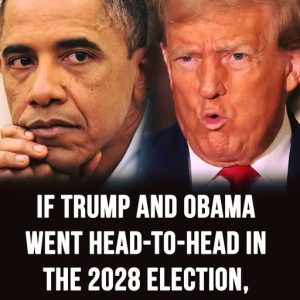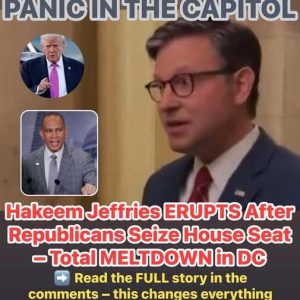A Presidential Power Play That Could Reshape Federal Agencies Forever
In the hallowed corridors of the Supreme Court, a dispute nearly a century in the making has reached a pivotal juncture, one that could redefine the contours of executive power in Washington. What began as a routine presidential action—an effort to remove a single commissioner from the Federal Trade Commission—has escalated into a constitutional confrontation with ramifications for the structure and authority of federal agencies far beyond any one administration.
At the core of the controversy is a fundamental question of American governance: how much control should a president wield over the federal bureaucracy, and what are the consequences when career officials hold powers that a sitting president cannot easily revoke?
The Commissioner Who Refused to Leave
The drama unfolded in March when President Donald Trump sought to remove FTC Commissioner Rebecca Slaughter, a Democrat appointed by former President Joe Biden. Slaughter’s seven-year term, scheduled to run until 2029, represented more than a solitary Democratic voice on the commission: her removal would have granted Republicans unchallenged control over one of the government’s most influential regulatory bodies.
Trump’s move was strategic, signaling his intent to advance an aggressive deregulatory agenda, undoing policies established under the Biden administration. Unlike her predecessor Alvaro Bedoya, who stepped aside quietly, Slaughter challenged her dismissal in court, elevating what could have been a routine personnel decision into a landmark legal battle. Her resistance became a proxy for the Democratic Party’s effort to maintain institutional influence amidst sweeping Republican control of the federal government.
The 1935 Precedent Under Scrutiny
Central to the case is the 1935 Supreme Court ruling in Humphrey’s Executor v. United States, which limits presidential removal power over certain independent commissioners. Designed during the New Deal to insulate regulatory agencies from political interference, the decision ensured that officials could only be removed for inefficiency, neglect, or malfeasance—not for policy disagreements.
Trump’s legal team, invoking the “unitary executive” theory, argues that such limitations are unconstitutional. Solicitor General D. John Sauer contended that “the president and the government suffer irreparable harm when courts transfer even some of that executive power to officers beyond the President’s control.” The stakes extend well beyond the FTC: an erosion of Humphrey’s Executor could affect the independence of federal agencies ranging from the Federal Reserve to the Securities and Exchange Commission.
Federal Courts Push Back
In July, a federal judge sided with Slaughter, citing Humphrey’s Executor to block her removal. The ruling underscored the judiciary’s role in preserving agency independence against overt political pressure, creating a constitutional standoff: Slaughter remained in office, technically, while the president faced limits on his removal authority. The decision illustrated the tension between expansive interpretations of presidential power and the need for continuity and expertise within the federal bureaucracy.
Supreme Court Takes Center Stage
The Supreme Court’s decision to hear the case marked a significant escalation. Chief Justice John Roberts initially issued an emergency stay blocking Slaughter’s reinstatement, signaling receptivity to Trump’s argument. In a 6-3 conservative-liberal split, the court’s conservative majority has signaled a readiness to reconsider—or potentially overturn—the 1935 precedent. Legal analysts note that the December oral arguments could redefine presidential authority over independent federal officials, reshaping the federal administrative landscape for decades.
Broader Implications for Governance
Beyond the FTC, the case represents a flashpoint in the conservative effort to limit the so-called “administrative state.” If the court grants the president broader removal authority, it could render agencies more politically responsive but less insulated from partisan shifts. This could affect regulatory stability in agencies overseeing financial markets, consumer protection, environmental policy, and more.
The debate also illuminates a fundamental tension in American governance: should independent agencies prioritize expertise and continuity, or accountability to the elected executive? The answer will reverberate through every policy area touched by federal oversight.
Parallel Signals from the Court
In a separate ruling, the Supreme Court curtailed California’s climate mandates in a 7-2 decision, reflecting skepticism toward expansive regulatory authority. Justice Brett Kavanaugh’s majority opinion emphasized limitations on government overreach, reinforcing a broader judicial trend favoring constraints on bureaucratic autonomy. Together with the Slaughter case, these decisions illustrate a court increasingly willing to reassess the balance between executive authority and independent regulation.
Looking Ahead to December
Oral arguments will test the boundaries of constitutional theory, weighing the president’s claim to unitary executive authority against the longstanding need for independent agencies. Observers will scrutinize how the court’s newest members interpret executive power, separation of powers, and agency independence—decisions that could reverberate across administrations for generations.
Economic and Policy Consequences
Beyond constitutional theory, the case carries tangible implications for business and economic policy. Agencies like the FTC play critical roles in antitrust enforcement, consumer protection, and financial regulation. Expanding presidential authority could make these agencies more directly responsive to political priorities, but it could also inject volatility and unpredictability into sectors that rely on stable regulatory oversight.
Conclusion: A Constitutional Crossroads
The Supreme Court’s handling of Rebecca Slaughter’s challenge represents a pivotal moment in American governance. The decision will shape the scope of presidential power, the independence of federal agencies, and the balance between political accountability and technical expertise.
Whether the court opts for sweeping reform or incremental adjustments, the case underscores the enduring tension between executive authority and institutional independence—a tension that has defined the evolution of the federal government since the New Deal and will continue to shape its future. December’s arguments will not merely determine the fate of one commissioner but may fundamentally redefine the American administrative state.



